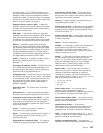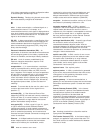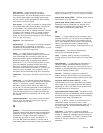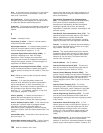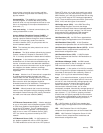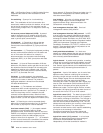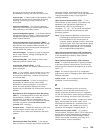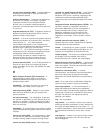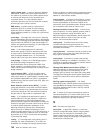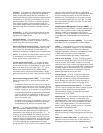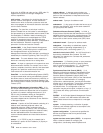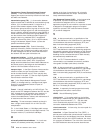throughout the world who provide assistance,
documentation, training, and other services to users.
network layer. In Open Systems Interconnection (OSI)
architecture, the layer that is responsible for routing,
switching, and link-layer access across the OSI
environment.
network management. The process of planning,
organizing, and controlling a communication-oriented
data processing or information system.
network management station. In the Simple Network
Management Protocol (SNMP), a station that executes
management application programs that monitor and
control network elements.
network management vector transport (NMVT). A
management services request/response unit (RU) that
flows over an active session between physical unit
management services and control point management
services (SSCP-PU session).
network manager. A program or group of programs
that is used to monitor, manage, and diagnose the
problems of a network.
network node (NN). See
Advanced Peer-to-Peer
Networking (APPN) network node
.
network user address (NUA). In X.25
communications, the X.121 address containing up to 15
binary code digits.
node. (1) In a network, a point at which one or more
functional units connect channels or data circuits. (I)
(2) Any device, attached to a network, that transmits
and receives data.
noncanonical address. In LANs, a format for the
transmission of medium access control (MAC)
addresses for token-ring adapters. In noncanonical
format, the most significant (leftmost) bit of each
address byte is transmitted first. Contrast with
canonical
address
.
Non-Return-to-Zero Changes-on-Ones Recording
(NRZ-1). A recording method in which the ones are
represented by a change in the condition of
magnetization, and zeros are represented by the
absence of change. Only the one signals are explicitly
recorded. (Previously called
non-return-to-zero
inverted
, NRZI, recording.)
nonseed router. In AppleTalk networks, a router that
acquires network number range and zone list
information from a seed router attached to the same
network.
O
Open Shortest Path First (OSPF). In the Internet
suite of protocols, a function that provides intradomain
information transfer. An alternative to the Routing
Information Protocol (RIP), OSPF allows the lowest-cost
routing and handles routing in large regional or
corporate networks.
Open Systems Interconnection (OSI). (1) The
interconnection of open systems in accordance with
standards of the International Organization for
Standardization (ISO) for the exchange of
information. (T) (A) (2) The use of standardized
procedures to enable the interconnection of data
processing systems.
Note: OSI architecture establishes a framework for
coordinating the development of current and
future standards for the interconnection of
computer systems. Network functions are divided
into seven layers. Each layer represents a group
of related data processing and communication
functions that can be carried out in a standard
way to support different applications.
Open Systems Interconnection (OSI) architecture.
Network architecture that adheres to that particular set
of ISO standards that relates to Open Systems
Interconnection. (T)
Open Systems Interconnection (OSI) reference
model. A model that describes the general principles
of the Open Systems Interconnection, as well as the
purpose and the hierarchical arrangement of its seven
layers. (T)
origin. An external logical unit (LU) or application
program from which a message or other data originates.
See also
destination
.
orphan circuit. A non-configured circuit whose
availability is learned dynamically.
P
pacing. (1) A technique by which a receiving
component controls the rate of transmission of a
sending component to prevent overrun or congestion.
(2) See also
flow control
,
receive pacing
,
send pacing
,
session-level pacing
, and
virtual route (VR) pacing
.
packet. In data communication, a sequence of binary
digits, including data and control signals, that is
transmitted and switched as a composite whole. The
data, control signals, and, possibly, error control
information are arranged in a specific format. (I)
packet internet groper (PING). (1) In Internet
communications, a program used in TCP/IP networks to
test the ability to reach destinations by sending the
destinations an Internet Control Message Protocol
(ICMP) echo request and waiting for a reply. (2) In
communications, a test of reachability.
Glossary 705



